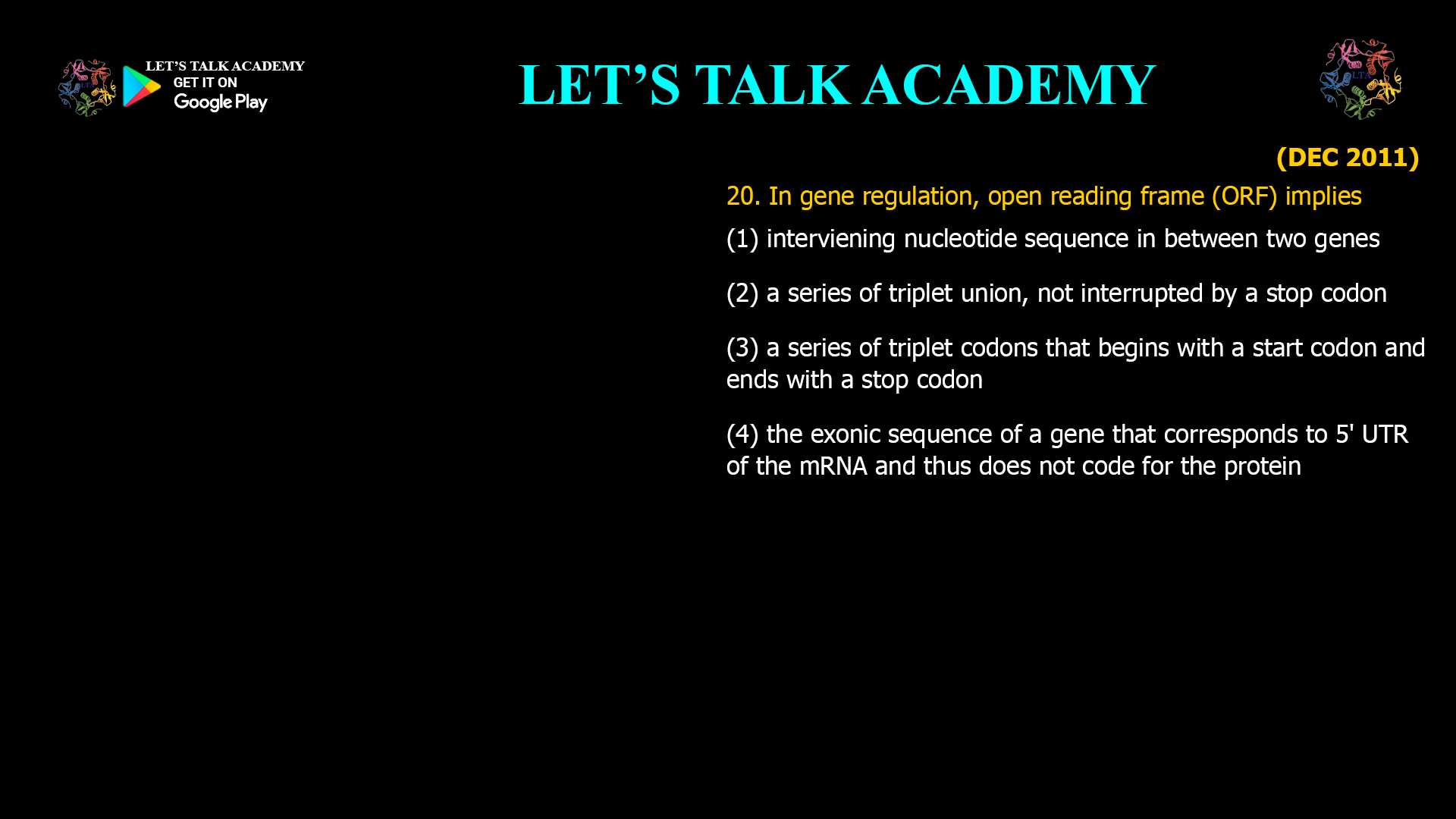- In gene regulation, open reading frame (ORF) implies
(1)interviening nucleotide sequence in between two genes
(2) a series of triplet union, not interrupted by a stop codon
(3) a series of triplet codons that begins with a start codon and ends with a stop codon
(4) the exonic sequence of a gene that corresponds to5′ UTR of the mRNA and thus does not code for the proteinUnderstanding Open Reading Frames (ORFs) in Gene Regulation
An Open Reading Frame (ORF) is a fundamental concept in molecular biology and gene regulation. It refers to a continuous stretch of nucleotides in DNA or RNA that has the potential to code for a protein.
What Is an Open Reading Frame?
-
An ORF is defined as a series of triplet codons (groups of three nucleotides) that begins with a start codon (usually AUG) and continues without interruption by any stop codon (such as UAA, UAG, or UGA) until it reaches a stop codon.
-
The start codon signals the beginning of translation, and the stop codon signals its termination.
-
The ORF represents the portion of the gene that is translated into a polypeptide chain.
Why Is ORF Important?
-
ORFs are crucial for gene prediction and annotation in genomic studies because they indicate potential protein-coding regions.
-
The length and integrity of an ORF help determine if a DNA sequence likely encodes a functional protein.
-
Identifying ORFs helps in understanding gene structure, expression, and regulation.
Explanation of the Options
Option Description Correctness (1) Intervening nucleotide sequence between two genes Incorrect (2) A series of triplet codons not interrupted by a stop codon Partially correct but incomplete (3) A series of triplet codons that begins with a start codon and ends with a stop codon Correct (4) Exonic sequence corresponding to 5′ UTR that does not code for protein Incorrect
Summary
-
The correct definition of an ORF is a sequence of codons starting with a start codon and ending with a stop codon, which encodes a protein.
-
While an uninterrupted sequence of codons without a stop codon (option 2) describes an open reading frame in a general sense, the presence of a start codon at the beginning is essential to define the ORF for translation initiation.
-
The 5’ untranslated region (5’ UTR) is part of the mRNA but does not code for protein and is therefore not an ORF.
Keywords for SEO Optimization
-
Open reading frame definition
-
ORF start and stop codons
-
Protein-coding sequences
-
Gene annotation and ORFs
-
Translation initiation and termination
-
Genomic sequence analysis
-
DNA and RNA coding regions
-
Molecular biology gene regulation
-
Protein synthesis and ORFs
-
Bioinformatics and gene prediction
Conclusion
In gene regulation, an Open Reading Frame (ORF) is best described as a series of triplet codons that begins with a start codon and ends with a stop codon. This sequence represents the protein-coding portion of a gene that is translated into a polypeptide. Hence, the correct answer is:
(3) a series of triplet codons that begins with a start codon and ends with a stop codon
-



